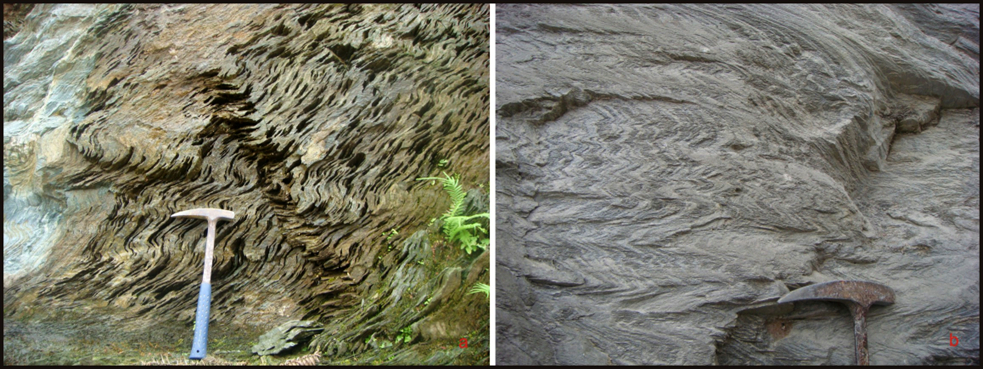Baizhu Fm
Type Locality and Naming
Northernmost Guangxi. The Baizhu Fm (lower formation of the Danzhou Gr) was named by the Guangxi Party of Regional Geological Survey in 1966. The typical section is situated at Baizhu village in Lindong, Rongshui County, Guangxi Zhuangzhu Zizhiqu (Guangxi Zhuang Autonomous Region). Lowermost formation in the Danzhou Gr.
Synonym: (白竹组)
Lithology and Thickness
The Baizhu Formation is obviously subdivided into two members. The base of the Lower member is composed of gray to greenish gray metamorphic conglomerate, pebbly gritstone and pebbly sericite quartz-phyllite, the lower part is composed of metamorphic sandstone intercalated with phyllite or schist, and the upper part is composed of schist or phyllite, with thickness of 237 to 569 m. Upper member is composed of gray to greenish gray calc-schist, calc-phyllite, sericite-phyllite, and calcareous talc-schist intercalated with limestone, dolomite or marble. The uppermost part in Hetong area of Sanjiang County bears a 4-20 cm band of hematite and the thickness of the upper member varies from 39 to 410 m.
[Figure: The limestone of the Baizhu Fm in Longsheng area, Guangxi Province (photo by Chen Jianshu)]
Relationships and Distribution
Lower contact
It unconformably overlies the underlying Sipu Gr (Sibao Gr)
Upper contact
The Hetong Fm (middle formation of the Danzhou Gr) conformably overlies the Baizhu Fm.
Regional extent
Northernmost Guangxi. It developed in Rongshui County, Guangxi
GeoJSON
Fossils
Age
Depositional setting
The sedimentary structure of the formation is dominated by flat-beddings, occasionally with lenticular or irregular beddings. The marble in the upper member bears pelitic and calcareous laminae, occasionally with convolute beddings.
Additional Information
